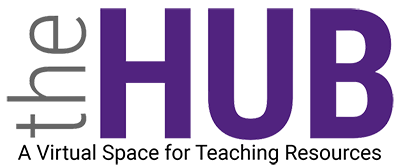Prompt Engineering Basics: https://lnkd.in/e3Ww6pDz ChatGPT Prompts Mastery: https://lnkd.in/eKzysUbR Intro to Generative AI: https://lnkd.in/eFP9u3xW AI Introduction…
Face-to-face Teaching
What is face-to-face Teaching?
As the name implies, face-to-face instruction occurs when the instructor and the students are gathered in the same place at the same time. Thus, instruction occurs synchronously, of course. This is the traditional mode of instruction delivery, and prior to the COVID-19 pandemic, it was the most common of the delivery modes at most colleges and universities in the United States.
Because the participants meet in person, face-to-face instruction allows for extensive interaction. Therefore, collaborative learning is often a salient aspect of these classes. Instructors will often ask students to work in pairs or small groups in order to build knowledge. Motivation is enhanced through such interaction, and students often build bonds which persist beyond the course.
Best practices for face-to-face mode of teaching
- Build a Community of Learners:
- Many students, particularly first-generation college students, feel disconnected from the college experience, as if they do not belong. Some students suffer from inequities based on their race, ethnicity, religion, sexual orientation, and other factors. Creating a culture of inclusivity in the classroom can help to alleviate this sense of isolation and discrimination (Barkley and Major, 2020). When students feel connected to their peers, their teacher, and the material, learning is more likely to occur. Therefore, trust, camaraderie, and engagement are essential elements in the construction of a learning community. Likewise, intentional inclusivity in course design and planning yields a stronger sense of community (Barkley and Major, 2020).
- Engage Through Active Learning Techniques:
- The use of active learning techniques, an approach to learning which emphasizes engagement and participation, is a hallmark of many face-to-face classes. Barkley and Major (2020) differentiate between active learning and active learning techniques. The former, they say, “consists of intellectual effort and deep processing,” while the latter aid students in doing this (p. 8). Many students learn best while dynamically involved in a task as opposed to listening to a lecture, and the employment of these techniques help create this classroom dynamism. Solving problems, explaining a new idea to others, defending an opinion, and creating learning artifacts are all examples of active learning.
- Use Formative Assessment:
- Formative assessments are assessments which have little or no weight in determining grades. Rather, they are tools the instructor uses to determine if the students have mastered a concept or skill. Like summative assessments, they can take many forms but are usually short, covering a limited amount of material. Formative assessments provide a means of timely feedback to the students, letting them know where they stand without penalizing them. Some see the use of formative assessments to provide feedback in order to enhance learning as an ongoing process rather than as a tool (Wiliam, 2018).
- Teach Metacognitive Strategies:
- Metacognition consists of two separate but complementary processes; these are being aware of one’s own cognition and being able to regulate that cognition (Malamed, n.d.). Being aware of one’s own lack of understanding is the first step. A student can then begin to employ learning strategies to ameliorate that incomplete comprehension. These strategies can and should be actively taught in the classroom. They include think-alouds, self-reflection, solving problems with peers, and others (Malamed, n.d.).
- Utilize Integrative Learning:
- Integrative Learning is the practice of making connections among ideas and experiences. The connections can be as basic as connecting a personal experience with the experiences of a character or historic figure studied in class or as complex as synthesizing theories from multiple disciplines and transfer them to a new context to solve a complex, real world problem. Faculty can promote integrative learning by offering students opportunities to make personal and disciplinary connections, make choices about how they communicate knowledge, and engage in metacognitive reflection of their learning over time. AAC&U presents five integrative learning principles with four benchmark levels for each principle. Integrative Learning is an essential component of Montgomery College’s General Education program. All General Education courses are required to include integrative learning opportunities throughout the course and as part of the signature assignments.
- Make Expectations Clear from the Beginning:
- Providing explicit course expectations from the beginning will go a long way to eliminating or reducing confusion on the part of the students and any friction between the instructor and the students that may result. Most people want to know what is expected of them and how they will be judged. Spelling this out in your syllabus and other course documents and reiterating that same information by other means provides consistency in messaging. Writing for Inside Higher Ed, Rob Weir (2010) advises “… set your expectations high, make them clear, and stick to them.”
References
Barkley, E, and Major, C.H. (2020). Student engagement techniques. Jossey-Bass.
Malamed, C. (n.d.). Metacognition and learning: strategies for instructional design. The e-learning coach. https://theelearningcoach.com/learning/metacognition-and-learning/
Weir, R. (January 27, 2010). Setting expectations. Inside Higher Ed. https://www.insidehighered.com/advice/2010/01/27/setting-expectations
Wiliam, D. (2018). Embedded formative assessment. Solution Tree.

This Post Has 0 Comments